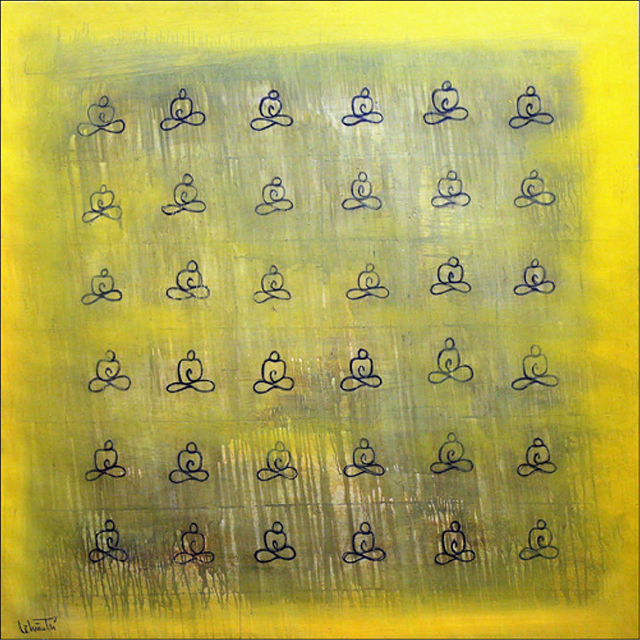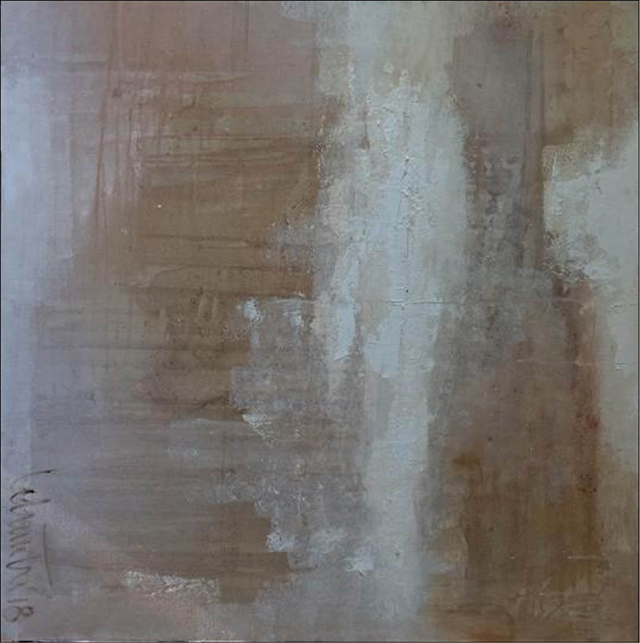After completing the military service, Le Huu Tri successfully passed the college entrance examination and became a student at Hue College of Fine Art. He left the college after a short time, and opened a painting studio of his own for more freedom in painting. Whenever he is highly inspired, he is often willing to sketch anyone who wants him to do.
Despite his difficulties in his daily life, artist Le Huu Tri has an vehement passion for painting that helps him through to live with and for art. He has had three exhibitions of his own in Hue (2001), in Hai Phong (2003) and in Hanoi (2005), as well as several exhibitions with groups of artists. At the international Hue Festival 2018, he was one of the participants in the project of depicting Trinh’s music, which occurred at café Trinh’s Notes on Trinh Cong Son street.
Le Huu Tri is currently a member of Vietnam Fine Art Association and of Thua Thien Hue Fine Art Association. He has rejected the sponsorship offered to art members for the reason that he is still capable of affording the cost of his painting.
He is rather introvert and only close to a few friends, keeping away from get-togethers and parties. He dedicates his time to painting. He said, “the reality sometimes unsuccessfully puts me down, which in turn became a motivation for my creation.” Tri has recently planned to produce art works of Vietnamese heart and mind in his own style. It appears that he has overcome obstacles of ordinary life to completely live in his own world of art – something that can be found in the life of the world well-known artists.

“Abstractness”
Artist Le Huu Tri has created his own world in his paintings, which is the most important goal in an artist’s life. He has passionately worked in such an artistically sentimental world and hardly cared about compliments and criticism. Century Hotel has offered him a space for painting exhibition. Hue Central Hospital had his paintings hung in almost every office. Le Huu Tri’s paintings are also of interests of the collectors from home and abroad. He is consistent in his charisma no matter whether he lives in a lavish style or he is broke.
Five years ago, Do Hien, a reporter from Nguoi Tieu Dung (‘The Consumer’) magazine, commented, “It is special that Le Huu Tri’s works were painted not only with commonly-used painting materials, but with materials he invented as well. In fact, he is both an artist and an ‘inventor’ of new painting materials. For example, he mixed ashes and glue to paint on canvas.
Some of his works were painted by sticking a mixture made from glue and melted plastic bags. Others were painted using a mixture of lime, gypsum, glue and color powder. Le Huu Tri said that sometimes he came across beautiful pieces of natural colors and he would do nothing but took them home and signed on them. For example, he took home a piece of metal from an old ship whose color was impressive and made it a work of art.”

The art work “Pink Rain” completed as part of the project on depicting Trinh’s music
The images of hard-working Hue women and the young ladies from three regions of the country have been enlivened by the use of colors on white canvas, making vivid paintings. Especially, Tri has never painted the facial details of young ladies in his paintings, for the beauty appearance should sometimes be hidden just as Islamic ladies often wear veils.
Le Huu Tri’s abstract world can be found in hundreds of his works, in which the color is prerequisite, shaping his abstract works. Colors in his abstract works are cold and somber, and deep into that world is a flimsy bright color.
To understand abstract paintings, viewers should not be bound in artistic theoretical concepts so as to integrate their emotions into the colors of the painting. In this way, they can feel something provoked from the work, mostly sadness. Sometimes, Le Huu Tri’s abstract works are like showers of rain. Sometimes, there are some that prevent viewers from imagination by a stretch of concrete black color. Yet it is this concrete black that enables viewers to understand themselves better.
As I explore Le Huu Tri’s world of abstractness, I realize the rendezvous he has with the indefiniteness - the one that few artists could attain.
Story and photos: Lam Son